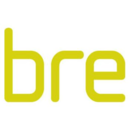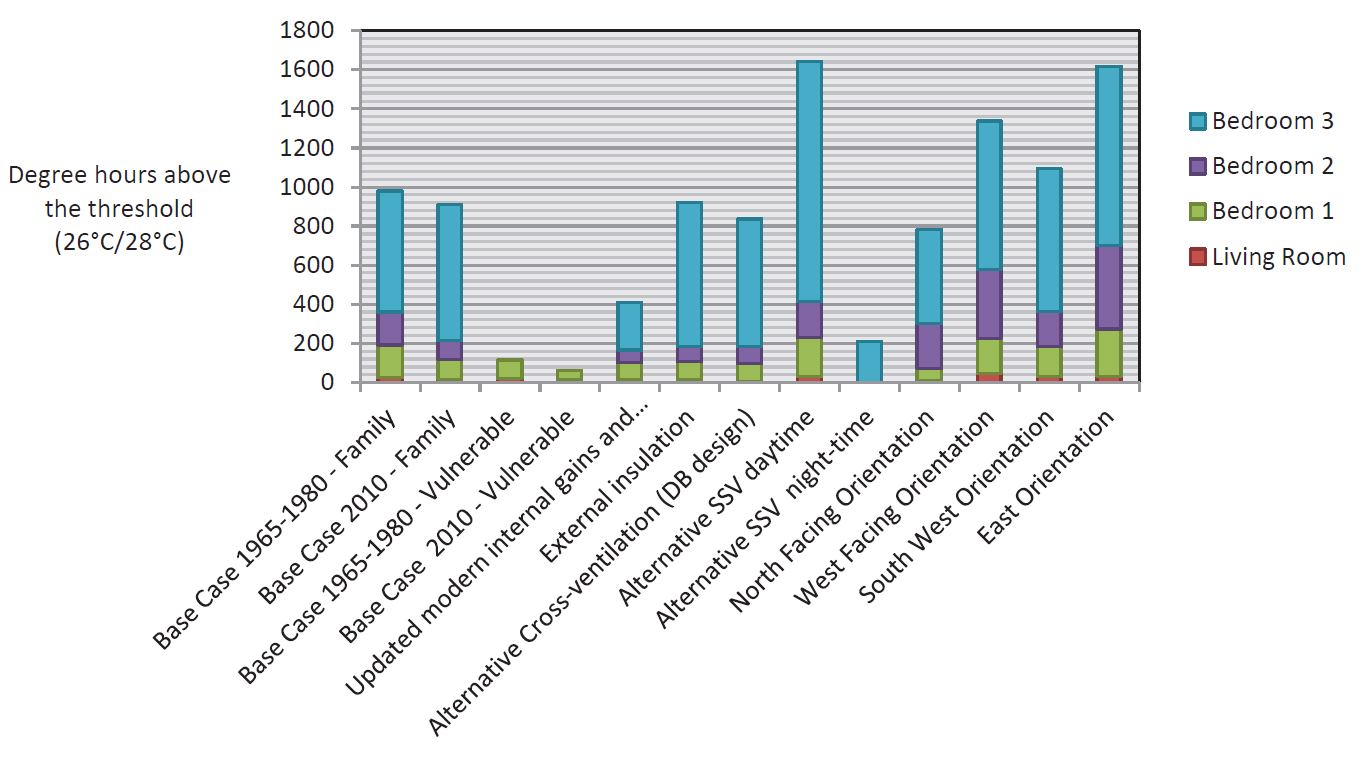Adapting 1965-1980 semi-detached dwellings in the UK to reduce summer overheating and the effect of the 2010 Building Regulations
Author: Steven Howse
Abstract
The aim of the report was to produce recommendations for occupants to undertake, concerning passive changes to the building design and changing occupant activity to reduce overheating in 1965- 1980 semi-detached dwellings. To do so, interventions in these two topics were tested to reduce overheating on a post 2010 Building Regulations base case.
This base case and interventions simulations were developed using IES software. To measure the level of overheating, internally, a degree hours over the CIBSE overheating threshold (CIBSE, 2006) method was used.
The basic upgrades to the building implementing the 2010 Building Regulation were found to decrease the total degree hours. When changed to two elderly (vulnerable) occupants, the total degree hours decreased overall. Other interventions that were found to decrease the total degree hours below the 2010 Building Regulation model were the updated appliances/occupancy trends, the cross ventilation strategy, north orientation and most prominently, the nigh time ventilation. A combined model of these interventions were then able to remove all degree hours beyond the threshold, even in a heat wave simulation; for both occupancy types.
As well as the combined intervention model, external wall paint shutters and curtains (sourced from previous research) are recommended for reducing overheating, based on ease-of-use and cost.
Executive summary
In the UK, there is a growing debate over the importance of decreasing winter fuel allowance through energy efficient upgrades to the building fabric against their effect on summer overheating. The focus of this report is to present a set of design and occupant recommendations on what occupants can do to passively reduce overheating in their 1965-1980 semi-detached dwellings. This is achieved by testing changes to occupant behaviour and building aspects; through different interventions, post 2010 Building Regulations.
IES software was chosen to simulate the different scenarios of possible interventions to overheating upon a base case design of a four person family 1965-1980 semi-detached dwelling. Standard dimensions, materials, occupant/appliance gains and time profiles were chosen to justify the base case. To measure the degree of overheating internally in the dwelling, a degree hours over the CIBSE overheating threshold (CIBSE, 2006) was used. This method measures the severity of overheating and allowed the comparison of the effect of these interventions on key rooms.
Figure 1 - Comparison of degree hours above the threshold (26°C/28°C) temperature for 1965-1980 semi-detached dwelling and rooms, testing different interventions
The basic upgrades to the building with the improved U-values of the 2010 Building Regulation were found to decrease the total degree hours; dispelling the main theory of health risk associated with improving the air tightness of the dwelling. When changed to two elderly (vulnerable) occupants, the total degree hours decreased overall compared to the original family profile. From the multiple interventions there are many that were found to increase the total degree hour of the dwelling.
Methods such as daytime single sided ventilation and east/west orientation were the most costly interventions, although there were question on the legitimacy of the increase in degree hours caused by external insulation. On the other hand, interventions that were found to decrease the total degree hours below the 2010 Building Regulation model were the updated appliances/occupancy trends, the cross ventilation strategy, north orientation and most prominently, the nigh time ventilation.
From the comparison of all the simulations combined (Figure 1), none of the proposed simulations were individually able to remove total degree hours over the threshold. However when combining the effective interventions, the generated results showed even in heat waves it was able to remove risk of overheating altogether (Figure 2). Although in the family heat wave scenario, the 1% over the threshold maximum was noted. (CIBSE, 2006)
Overall in merging both the combined reduction techniques of this particular study with a previous study, a definitive set of recommendations were made. Taking into account both the ease of implementation and cost of the method, as well as the previously stated degree hours reducing interventions, external wall paint, shutters and curtains could be used.
Figure 2 - Comparison of degree hours above the threshold (26°C/28°C) temperature for 1965-1980 semi-detached dwelling and rooms, testing different interventions
In the wider relevance of the research, it can be used to judge the severity of risk that it may cause to occupant health. Furthermore, it can be used to adapt more criteria in current guidance reports for overheating, with the interventions tested on other types of dwellings.
This paper was entered into a competition launched by --BRE Group and UBM called to investigate the link between buildings and the wellbeing of those who occupy them.
IHBC NewsBlog
Old Sarum fire in listed (& disputed) WW1 Hangar - Wiltshire Council has sought legal advice after fire engulfed a listed First World War hangar that was embroiled in a lengthy planning dispute.
UK Antarctic Heritage Trust launches ‘Virtual Visit’ website area
The Trust calls on people to 'Immerse yourself in our heritage – Making Antarctica Accessible'
Southend Council pledge to force Kursaal owners to maintain building
The Council has pledged to use ‘every tool in the toolbox’ if urgent repairs are not carried out.
HE’s Research Magazine publishes a major study of the heritage of England’s suburbs
The article traces the long evolution of an internal programme to research 200 years of suburban growth
IHBC Context 183 Wellbeing and Heritage published
The issue explores issues at the intersection of heritage and wellbeing.
SAVE celebrates 50 years of campaigning 1975-2025
SAVE Britain’s Heritage has announced events across the country to celebrate bringing new life to remarkable buildings.
IHBC Annual School 2025 - Shrewsbury 12-14 June
Themed Heritage in Context – Value: Plan: Change, join in-person or online.
200th Anniversary Celebration of the Modern Railway Planned
The Stockton & Darlington Railway opened on September 27, 1825.
Competence Framework Launched for Sustainability in the Built Environment
The Construction Industry Council (CIC) and the Edge have jointly published the framework.
Historic England Launches Wellbeing Strategy for Heritage
Whether through visiting, volunteering, learning or creative practice, engaging with heritage can strengthen confidence, resilience, hope and social connections.

















